
A Leisurely Drake’s Bay Race
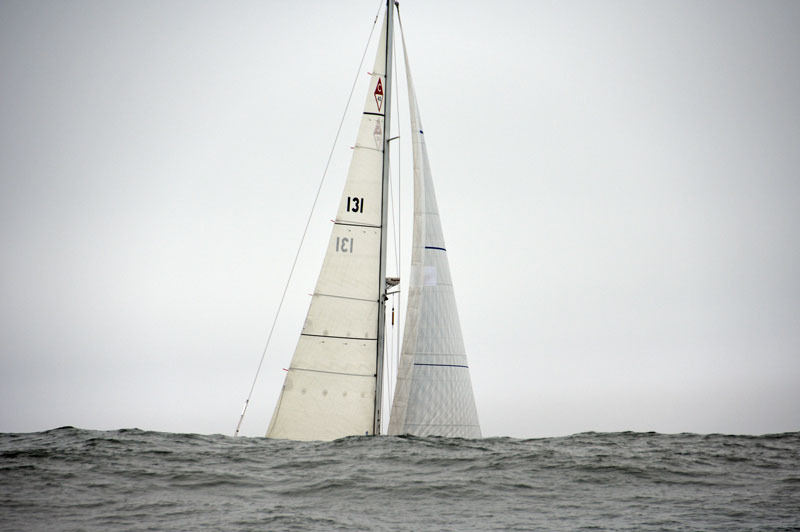
©2018 Latitude 38 Media, LLC
As in recent years, oceangoing doublehanders and singlehanders of the Singlehanded Sailing Society joined the OYRA for the Drake’s Bay Race. The two-day regatta sends the fleet out from Corinthian Yacht Club in Tiburon up to Point Reyes, where the boats anchor out, some joining together in small raft-ups. The J/109 Joyride served as the finish boat on Saturday and the starting boat on Sunday. Boats finished off CYC’s race deck on Sunday.
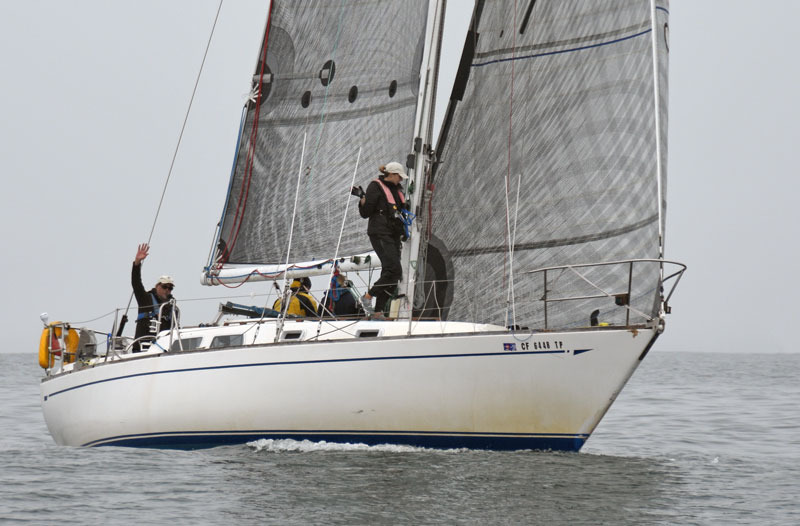
© Latitude 38 Media, LLC
Except for some sporty conditions inside San Francisco Bay, both days had light to very light wind, including at the CYC start/finish line. Fog obscured the coastline and, at times, fellow racers.
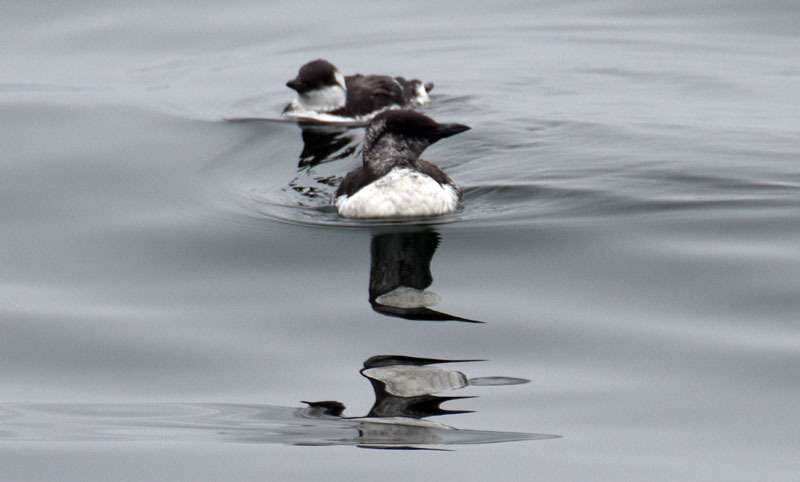
©2018 Latitude 38 Media, LLC
Sea life, including humpback whales and harbor porpoises, provided a distraction from the slow crawl up and down the 31-mile course. One skipper reported that he thinks he inadvertently hit a large mola mola (sunfish).
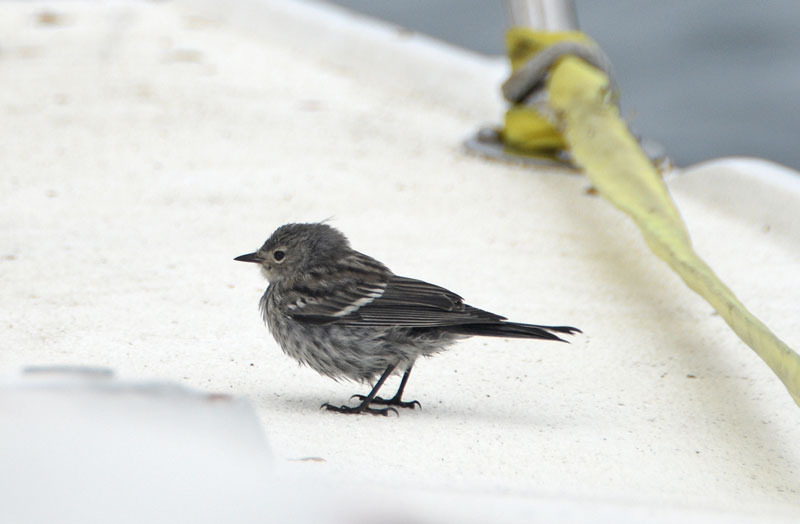
©2018 Latitude 38 Media, LLC
Due to the light air, many boats dropped out of the race on both days. Results will be posted on the Jibeset pages of the SSS and OYRA.
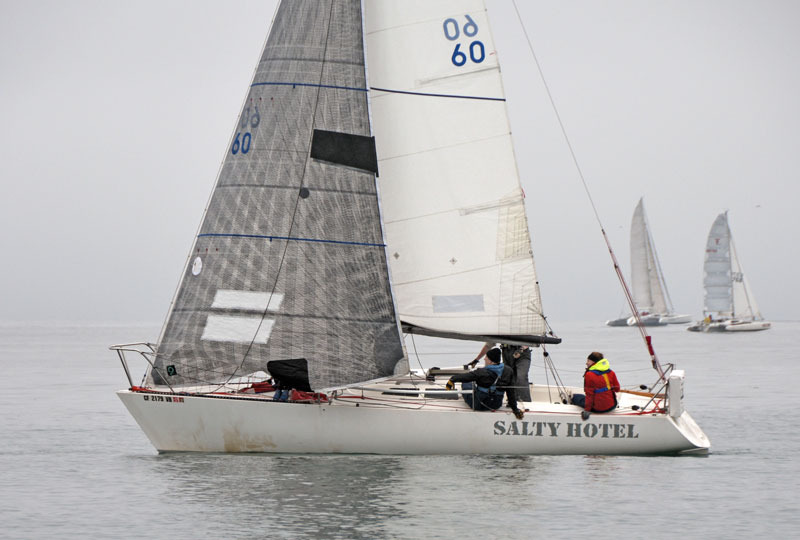
© Latitude 38 Media, LLC
Look for more on the Drake’s Bay Race in Racing Sheet in the September issue of Latitude 38.
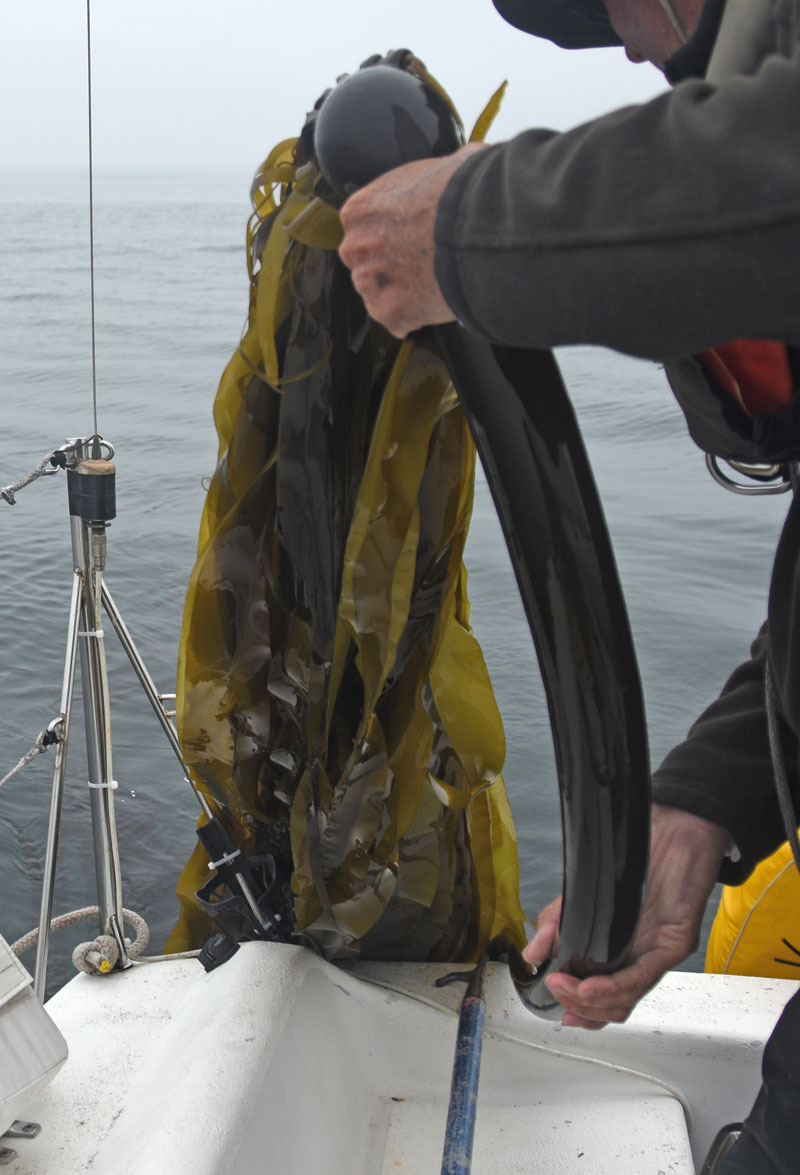
© Latitude 38 Media, LLC
California Sailors Now Ocean Warriors
You never know where you’ll end up after you start sailing in small boats on the California coast. This week, two separate events hosted by California small-boat sailors — who have moved on to make a big difference on the oceans — are in town to share their stories with the Bay Area.
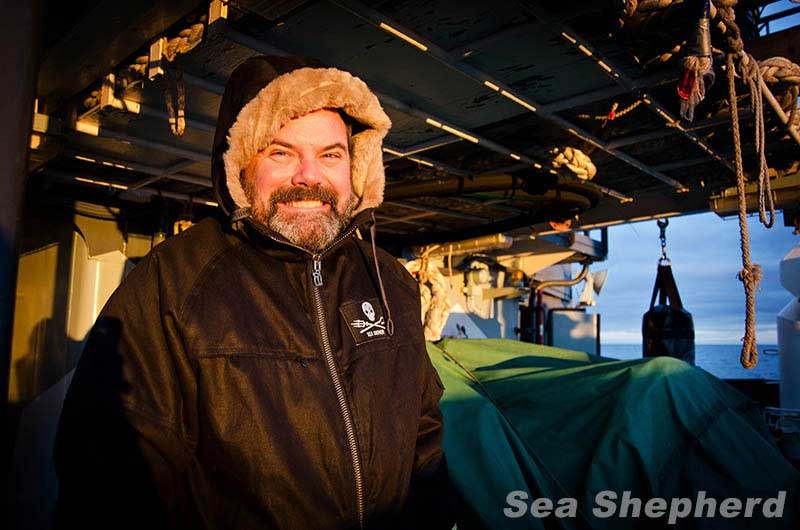
Captain Adam Meyerson was born in San Francisco and grew up sailing El Toros and Lasers on Tomales Bay. Since then, he’s covered thousands of miles on missions for Sea Shepherd Conservation Society. This Thursday, August the 23rd, Captain Meyerson will be at the Cowell Theater in Fort Mason with the International Ocean Film Festival for a screening of Chasing the Thunder, a high-seas documentary about the Sea Shepherd’s epic 110-day, 10,000-mile chase of the Thunder, considered the world’s most notorious poaching vessel. (The New York Times also had a reporter on board the Bob Barker during the chase.)
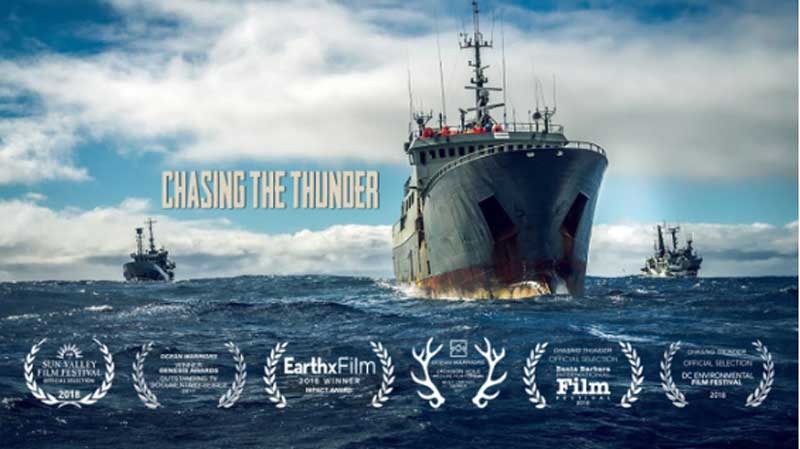
Two other sailors from Southern California will also be arriving in San Francisco Bay from Vancouver this week aboard the 72-ft aluminum Sea Dragon as part of the Pangaea Exploration mission, which works to "actively strengthen the health of marine life through exploration, conservation and education work." Eric Loss and Shanley McEntee have been with Pangaea Exploration since 2012. Eric grew up in Laguna Beach, where he sailed dinghies, raced CFJs, Larks, and 420s, and taught sailing to kids in Dana Point. Shanley grew up surfing and swimming in Del Mar, then learned to sail after college. Throughout her youth, she worked with the Surfrider Foundation to protect California’s coast.
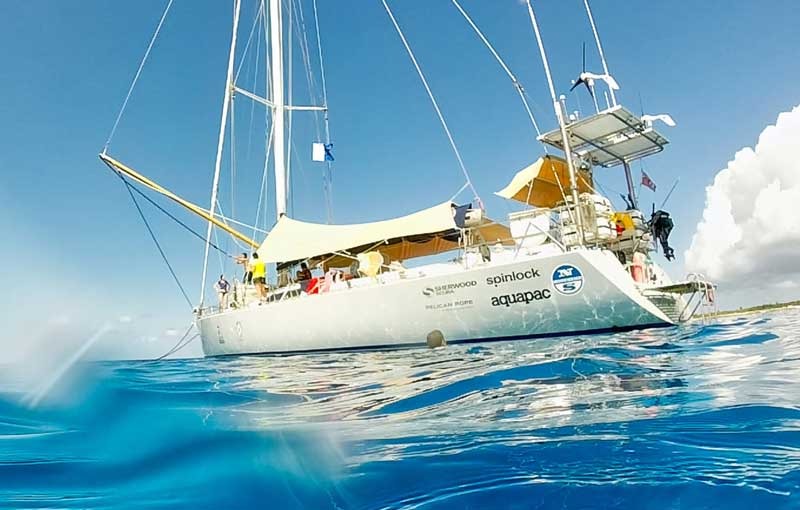
Current Sausalito resident and former Sea Dragon crew member Katie Jewett is on the sail south from Vancouver now and let us know the boat will be at the Army Corps of Engineers Dock in Sausalito and open for tours Friday August 24 at 4 and 6:30 p.m. and on Sunday August 26 at 10:30 a.m. and 2:30 p.m. Both Eric and Shanley have extensive experience working with scientific and nonprofit research groups, and have thousands of ocean sailing miles under their belts, including the Caribbean, throughout the Atlantic, and into the Arctic Circle aboard their own Pouvreau 42 Cutter, Fleur Australe.
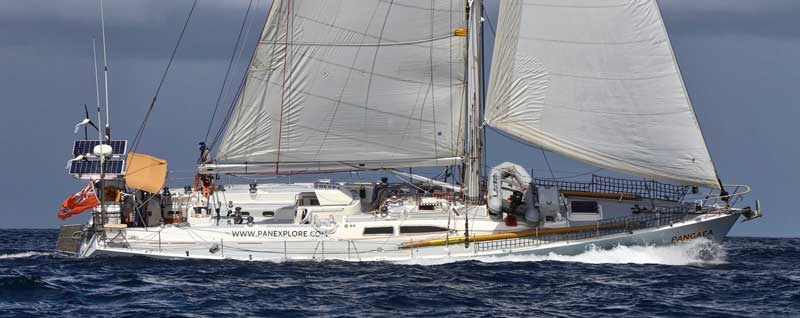
It’s not surprising that those who grow up enjoying sailing and surfing in California go on to find ways to preserve and protect it. This week gives us all an opportunity to learn more from people who’ve found a way to combine their love of the sea and sailing with making positive contributions to a sustainable planet.
More Mystery Boats
Has anyone ever heard of the Treasure Island-class sailboat?
The design was a hard-chined and possibly plywood 21- to 23-footer. The Palo Alto Sea Scouts had one in the ’60s, back when there actually was a harbor at Palo Alto. That boat was named Nixie. We’re especially curious who designed and built this mystery boat.
We the Voyagers
On Wednesday, a sneak peek of the documentary We the Voyagers will be screened at the San Francisco Yacht Club. The film is part of the Vaka Taumako Project, a nonprofit centered on Taumako Island in the Duff Islands group, in the Solomons. The project "aims to perpetuate ancient Polynesian seafaring knowledge and practice by training a new generation of Taumako youth to build, sail, and navigate using the ancient methods, materials, and tools used by their ancestors." The project also documents the building and sailing of voyaging canoes known as Vaka o Latas (which are named after the ancient Polynesian culture hero Lata).
We were at a sneak peak of We the Voyagers back in April at the Dolphin Club, where we met the film’s principal investigator Mimi George — a sailor and anthropologist — whom we wrote about in the August issue’s Sightings. While she was a pre-med student on the East Coast, George read David Lewis’s seminal book We the Navigators, which changed the course of Mimi’s studies; she has spent her career studying ancient voyaging cultures.
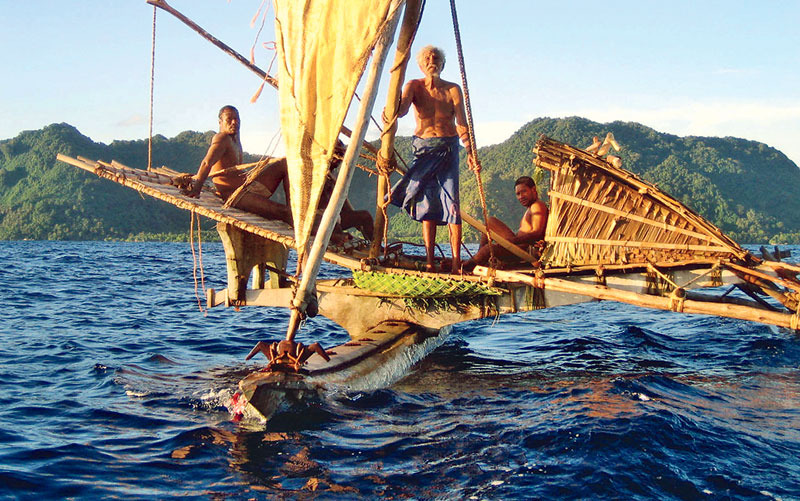
Polynesian-inspired non-instrument voyaging has had something of a resurgence in the last few decades. In 1975, the Polynesian Voyaging Society built the Hokule’a, a fiberglass twin-hulled, 61-ft wa’a, or voyaging canoe. The Hokule’a has since circumnavigated the globe, and has trained navigators in non-instrument wayfinding. In 2016, the New York Times wrote an extensive piece about "wave pilots" in the Marshall Islands attempting to pass on their secret craft to a new generation. There was also a modern-day angle to that particular exhibition: An anthropologist, physicist and oceanographer joined traditional navigator Alson Kelen on an interisland voyage in the hopes that he could help them explain "how wave pilots, in defiance of the dizzying complexities of fluid dynamics, detect direction and proximity to land. More broadly, they wondered if watching him sail, in the context of growing concerns about the neurological effects of navigation-by-smartphone, would yield hints about how our orienteering skills influence our sense of place, our sense of home, even our sense of self," wrote Kim Tingley in the Times.
There’s been another seemingly unlikely force perpetuating Polynesian voyaging: That’s right, the Disney/Pixar musical Moana. "As someone who lectures on traditional oceanic navigation and migration, I can say resoundingly that it is high time the rest of the world learned this amazing story," wrote geographer Doug Herman, who specializes in the cultural knowledge of Hawaii and Pacific islands, in Smithsonian Magazine. Herman also criticized the film for some inaccuracies, and for perpetuating insensitive tropes about Polynesians. Speaking about the Vaka Taumako Project, Mimi wrote: "An isolated Polynesian community uses ancient voyaging skills to reconnect with ancestral partners on distant islands. Everyone is part of this real Moana." (Yes, the Latitude Movie Club will be reviewing Moana in an upcoming ‘Lectronic.)
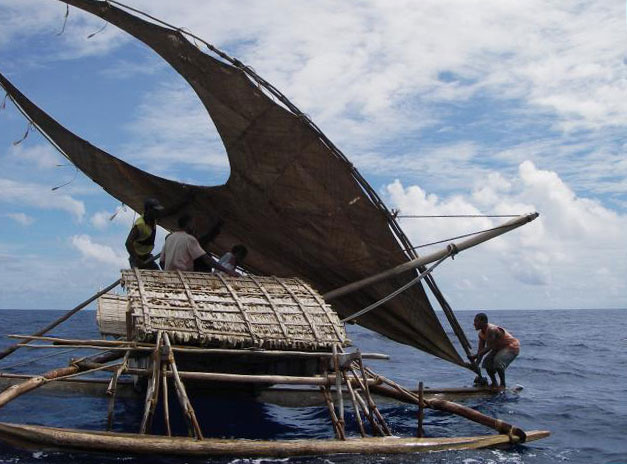
The Polynesians don’t have the same foothold in history as Columbus, Drake or Magellan. There is virtually no documentation or history of their maritime society; there were no portraits painted of them, and they have no models or drawings equivalent to the Niña, Pinta, or Santa Maria to be revered by school children. But the power of a culture that populated two thirds of the planet cannot be denied. "The colonization of Pacific Islands is the greatest human adventure story of all time," said Herman. "People using Stone Age technology built voyaging canoes capable of traveling thousands of miles, then set forth against the winds and currents to find tiny dots of land in the midst of the largest ocean on Earth. And having found them, they traveled back and forth, again and again, to settle them 500 to 1,000 years ago."
